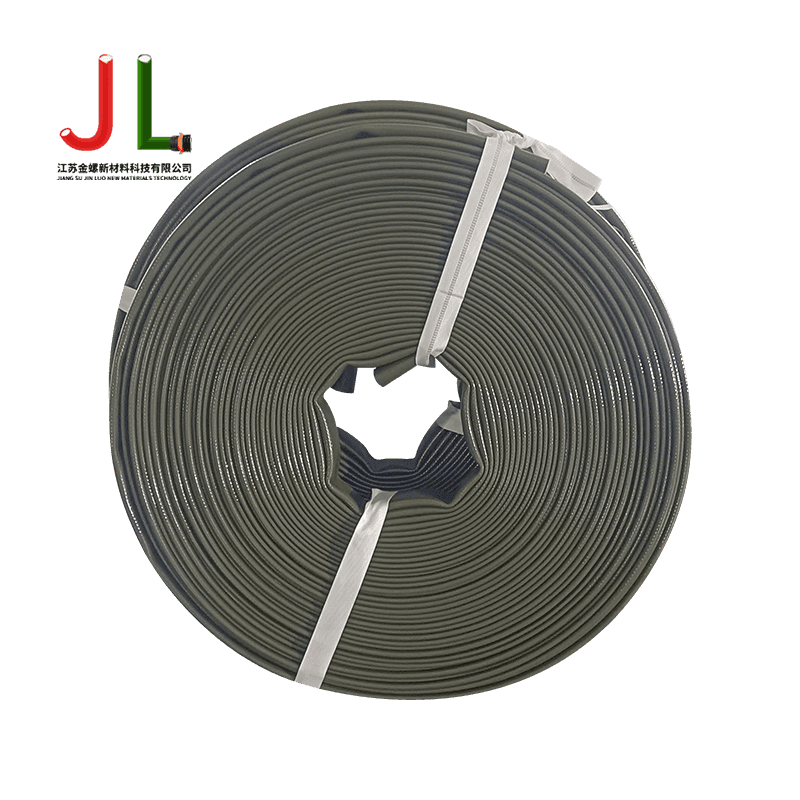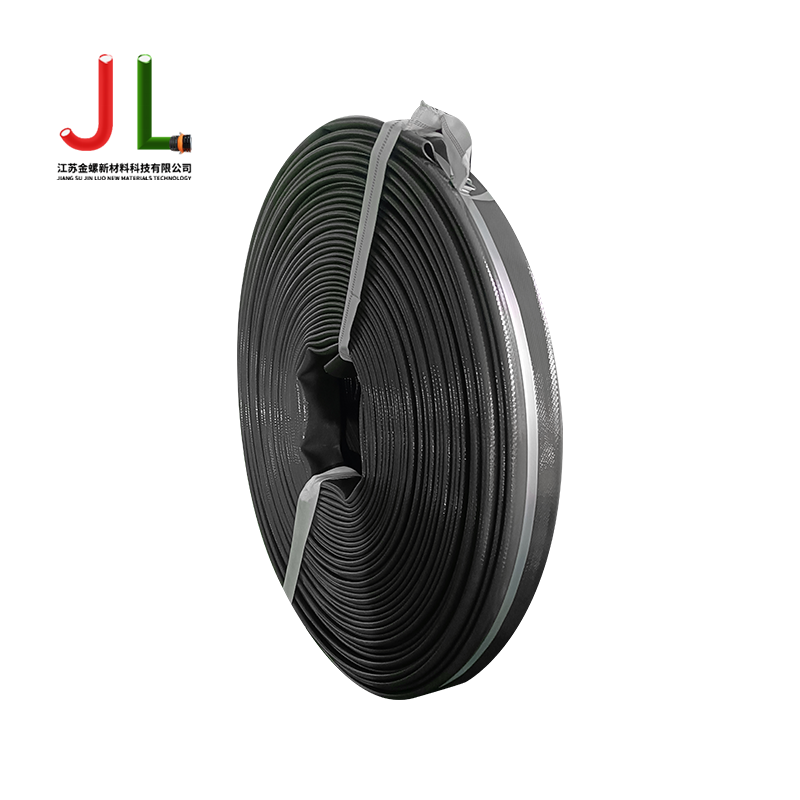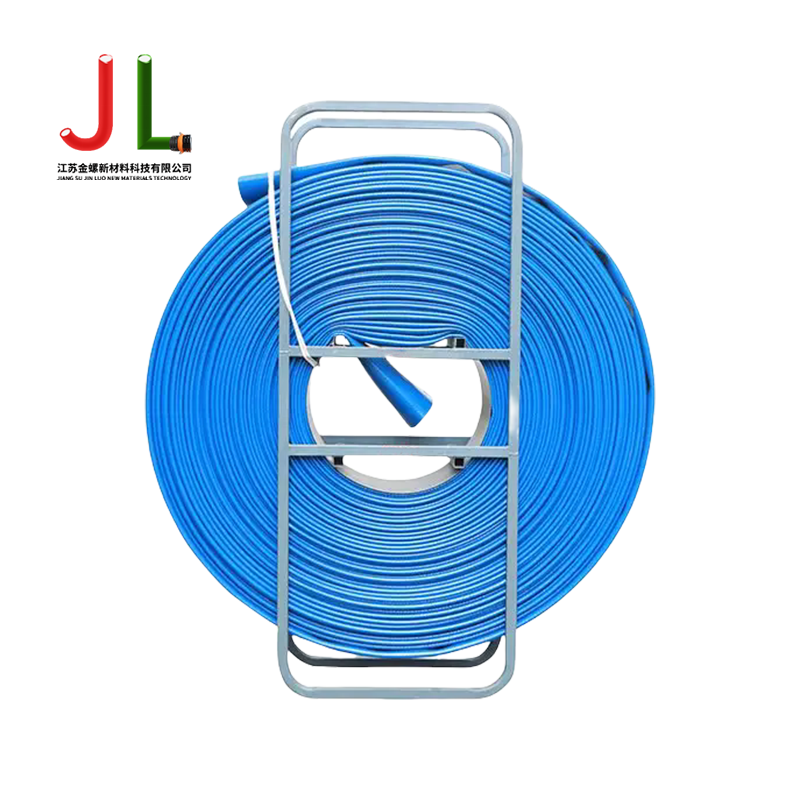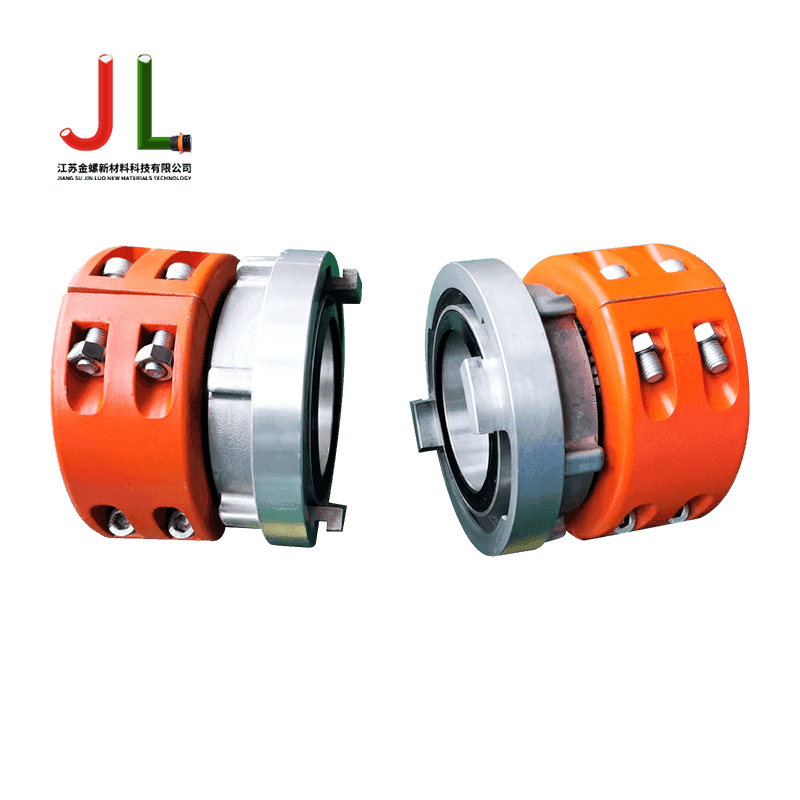PU Flat Hose vs PVC Hose: Key Differences and Advantages
Understanding the Core Materials: Polyurethane and Polyvinyl Chloride
When selecting a hose for industrial, agricultural, or domestic applications, the choice of material is paramount. Two of the most common materials encountered are Polyurethane (PU) and Polyvinyl Chloride (PVC). While both are types of plastic polymers, their chemical composition and resulting properties differ significantly, leading to distinct performance characteristics in hose applications. Polyurethane is a versatile polymer known for its exceptional toughness, flexibility, and resistance to abrasion, oils, and greases. Its molecular structure allows it to withstand repeated bending and twisting without cracking or failing, making it a durable choice for demanding environments. On the other hand, Polyvinyl Chloride is a widely used, cost-effective plastic that can be formulated to be either rigid or flexible. Flexible PVC, commonly used in hoses, is achieved by adding plasticizers. However, these plasticizers can leach out over time, leading to the hose becoming brittle, especially when exposed to extreme temperatures or weather conditions. Understanding this fundamental difference in material science is the first step in appreciating why a lightweight flat hose for gardening might be made from PU rather than PVC, as the need for easy handling and resistance to kinking is crucial in such applications.
The Chemistry Behind the Performance
The long-term performance of a hose is dictated by its chemical resistance. Polyurethane hoses exhibit excellent resistance to a broad range of substances, including oils, greases, fuels, and many solvents. This makes them indispensable in automotive, manufacturing, and chemical transfer settings where exposure to such materials is frequent. PVC hoses also offer good chemical resistance to many acids, alkalis, and alcohols, but they are generally not recommended for use with petroleum-based products, as these can cause the plasticizers to leach out, degrading the hose material. This distinction is critical for anyone searching for a chemical resistant polyurethane tubing solution, as PU consistently outperforms PVC in harsh chemical environments. The inherent resistance of PU without relying on additives that can migrate gives it a significant advantage in maintaining its integrity and safety over a longer service life.
Head-to-Head Comparison: A Detailed Look at Properties
To make an informed decision, it is essential to compare PU and PVC hoses across several key performance metrics. The following analysis breaks down these properties to highlight the strengths and weaknesses of each material.
Durability and Abrasion Resistance
In terms of pure toughness, Polyurethane is the clear winner. It is renowned for its high abrasion resistance, often cited as being up to ten times more resistant to wear than PVC. This means that a PU hose can be dragged across rough concrete, gravel, or other abrasive surfaces without showing significant signs of wear or damage. PVC, while durable for general use, is more susceptible to scratching, scraping, and eventual failure when subjected to similar abrasive conditions. For applications in construction, mining, or any scenario where the hose is in constant contact with rough surfaces, the superior abrasion resistance of PU translates to a longer-lasting product and reduced replacement costs.
Flexibility, Kink Resistance, and Cold Weather Performance
Flexibility is a major differentiator. PU hoses remain exceptionally flexible across a wide temperature range. They resist kinking even at very low temperatures, ensuring a consistent flow. This characteristic is vital for applications like air compressor hose for industrial use, where a kink can disrupt workflow and reduce efficiency. PVC hoses, conversely, become significantly stiffer and more prone to kinking as the temperature drops. In cold climates, a PVC hose can become difficult to handle and may crack if uncoiled or bent. The memory of PU—its ability to return to its original flat or coiled shape after use—is also superior, which is a key feature for collapsible water hose for space saving. This makes PU flat hoses ideal for recreational vehicles, boating, and small gardens where easy storage is a priority.
Weight and Handling
PU is inherently a lighter material than PVC. When manufactured into a flat hose design, the weight advantage is even more pronounced. A lightweight flat hose for gardening made from PU is much easier to carry, drag, and maneuver around obstacles than a standard PVC round hose. This reduces user fatigue and increases productivity, especially in large-area watering tasks. The lightweight nature of PU also contributes to lower shipping costs, which can be a consideration for both manufacturers and end-users.
Temperature Tolerance
The operational temperature range is another critical factor. Polyurethane hoses typically perform well in a range from approximately -40°C to 80°C (-40°F to 176°F), maintaining their flexibility and strength. PVC hoses have a more limited range, usually from -10°C to 60°C (14°F to 140°F). Outside of these ranges, PVC can become brittle and crack in the cold or soften and deform under high heat. This makes PU the more reliable choice for applications involving hot air or water, or for use in environments with extreme seasonal temperature variations.
Summary Comparison Table
The table below provides a concise summary of the key differences between PU and PVC hoses based on the properties discussed.
| Property | PU Flat Hose | PVC Hose |
|---|---|---|
| Abrasion Resistance | Exceptionally High | Moderate |
| Flexibility (Low Temp) | Remains Flexible | Becomes Stiff and Brittle |
| Chemical Resistance | Excellent against oils, greases, solvents | Good against acids, alkalis; poor against oils |
| Weight | Lightweight | Heavier |
| Temperature Range | -40°C to 80°C (-40°F to 176°F) | -10°C to 60°C (14°F to 140°F) |
| Kink Resistance | Very High | Moderate to Low, especially when cold |
| Memory / Coiling | Excellent, returns to original shape | Fair, can develop a permanent set |
Advantages of PU Flat Hoses in Specific Applications
The unique properties of Polyurethane translate into significant advantages for specific use cases. By focusing on these applications, we can see why PU flat hoses are often the specialist's choice.
Industrial and Manufacturing Settings
In factories and workshops, equipment reliability is non-negotiable. The role of a air compressor hose for industrial use is critical for powering tools, machinery, and control systems. A PU flat hose excels in this environment for several reasons:
- Durability: It can withstand being run over by forklifts or carts, contact with sharp metal edges, and constant abrasion from factory floors without failing.
- Kink Resistance: A kinked air hose causes a pressure drop, reducing tool efficiency. PU's high kink resistance ensures consistent air flow and power delivery.
- Oil and Grease Resistance: Industrial environments are often saturated with lubricants and hydraulic fluids. PU's inherent resistance to these substances prevents degradation and hose failure.
- Lightweight and Flexible: Despite its toughness, a PU hose is easy for workers to handle and maneuver, reducing physical strain and improving safety.
Furthermore, for tasks requiring the transfer of liquids other than water, such as in chemical processing or fluid transfer, the need for a robust chemical resistant polyurethane tubing is met by PU's superior material properties, ensuring both the purity of the transferred medium and the safety of the operation.
Gardening, Landscaping, and Recreational Use
For the home user, gardener, or outdoor enthusiast, the benefits of PU flat hoses are equally compelling. The demand for a lightweight flat hose for gardening is perfectly addressed by PU.
- Easy Storage: The concept of a collapsible water hose for space saving is synonymous with PU flat hoses. They drain completely and compress to a fraction of their operational size, making them ideal for small sheds, balconies, or caravans.
- Gentle on Lawns and Plants: Their flat profile and lightweight nature mean they are less likely to damage delicate plants or grass when dragged across a garden bed.
- User-Friendly: Their light weight makes them easy for people of all ages and strengths to use, eliminating the heavy lifting associated with traditional rubber or PVC hoses.
This combination of convenience and performance also extends to creating a high pressure wash down hose for tasks like cleaning patios, driveways, and vehicles. PU hoses can handle the high pressures from pressure washers without bursting, while their flexibility makes them easier to control during use. The abrasion resistance also protects the hose from being damaged by rough concrete surfaces during cleaning.
Specialized and Niche Applications
Beyond common uses, the properties of PU hoses make them suitable for more specialized fields. In pneumatic materials handling systems, a durable and flexible hose is required to convey abrasive powders or granules. In the automotive industry, they are used for low-pressure air and fluid lines. Their non-marking and anti-static variants are available for use in cleanrooms or environments with a risk of electrostatic discharge. The search for a chemical resistant polyurethane tubing often originates from these specialized sectors where material compatibility and reliability are paramount. The ability of PU to be manufactured in various colors also allows for color-coding in complex industrial systems, enhancing safety and organization.
Making the Right Choice for Your Needs
The decision between a PU flat hose and a PVC hose is not about finding a universally "better" product, but about selecting the right tool for the job. Your choice should be guided by a careful assessment of your specific requirements and operating conditions.
When to Choose a PU Flat Hose
You should strongly consider a PU flat hose if your application involves any of the following factors:
- Harsh Environments: Exposure to abrasion, oils, greases, or a wide range of chemicals.
- Extreme Temperatures: Operation in very cold or moderately hot conditions where flexibility must be maintained.
- Frequent Handling and Mobility: Applications where the hose is moved, dragged, or coiled regularly, such as with a high pressure wash down hose or a lightweight flat hose for gardening.
- Space Constraints: A need for easy storage, making a collapsible water hose for space saving an attractive solution.
- High-Pressure Air or Water: Tasks requiring reliable performance under pressure without the risk of kinking or bursting.
The initial investment in a PU hose is often offset by its longer service life and reduced downtime, providing a better total cost of ownership.
When a PVC Hose Might Suffice
A PVC hose can be a perfectly adequate and cost-effective choice for less demanding applications. Consider PVC for:
- General Purpose Watering: Basic garden and lawn watering in mild climates.
- Light-Duty Use: Applications where the hose is used infrequently and stored in a protected environment.
- Budget-Conscious Projects: Where the primary concern is initial purchase price and the performance limitations of PVC are acceptable.
- Chemical Applications: Specifically, for transferring substances that are compatible with PVC, such as certain acids and alkalis, but not oils or fuels.
By clearly defining your needs regarding chemical exposure, temperature, durability, and handling, you can confidently select the hose material that will deliver optimal performance, safety, and value for your specific situation.



 English
English عربى
عربى 中文
中文













